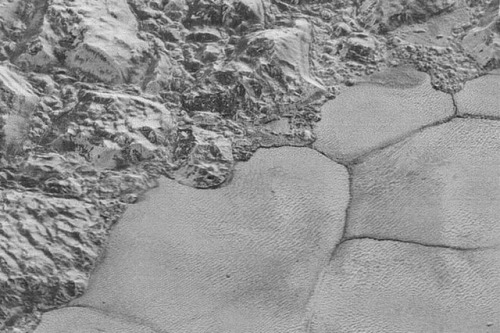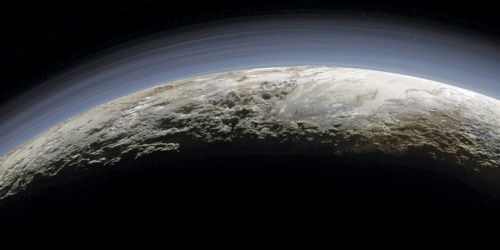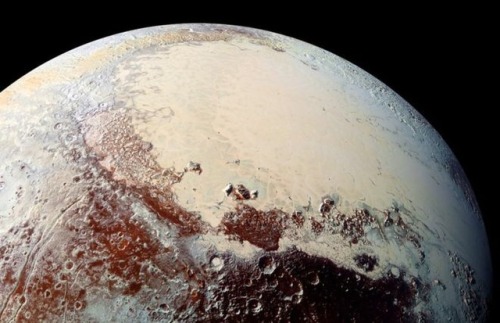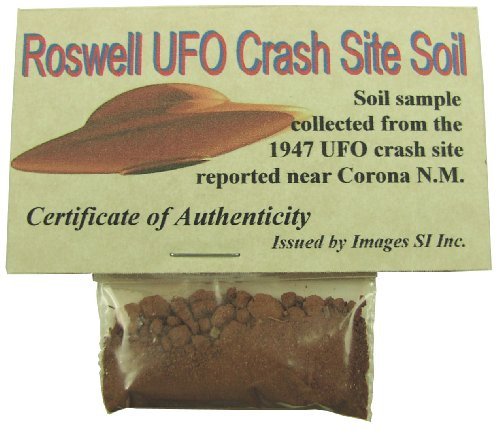Say Hello To The Saturn Nebula 👋

Say hello to the Saturn Nebula 👋
Garden-variety stars like the Sun live fairly placid lives in their galactic neighborhoods, casually churning out heat and light for billions of years. When these stars reach retirement age, however, they transform into unique and often psychedelic works of art. This Hubble Space Telescope image of the Saturn Nebula shows the result, called a planetary nebula. While it looks like a piece of wrapped cosmic candy, what we see is actually the outer layers of a dying star.
Stars are powered by nuclear fusion, but each one comes with a limited supply of fuel. When a medium-mass star exhausts its nuclear fuel, it will swell up and shrug off its outer layers until only a small, hot core remains. The leftover core, called a white dwarf, is a lot like a hot coal that glows after a barbecue — eventually it will fade out. Until then, the gaseous debris fluoresces as it expands out into the cosmos, possibly destined to be recycled into later generations of stars and planets.
Using Hubble’s observations, scientists have characterized the nebula’s composition, structure, temperature and the way it interacts with surrounding material. Studying planetary nebulas is particularly interesting since our Sun will experience a similar fate around five billion years down the road.
Make sure to follow us on Tumblr for your regular dose of space: http://nasa.tumblr.com.
More Posts from Stickoflicorice and Others


Journey ahead



Methane ice dunes found on Pluto
The findings come after images from NASA’s New Horizon mission have been analysed from travelling the system for nearly a decade. As well as having a diameter of only 2,377km and surface temperatures of -230C; Pluto’s atmosphere was thought to be too thin for the formation of features similar to those found in deserts on earth. The dunes formed next to a major mountain range of water ice 5km high where wind is generated as air flows downhill. It can get as high as 10m/s which is enough to carry the tiny particles. Scientists can’t see everything from the images but they were able to discern the dunes are 0.4-1km apart and the methane crystals 200-300 micrometers in diameter (roughly a grain of sand).
The grains of methane (and maybe nitrogen) are thought to be produced through a process known as sublimation. This is where a solid transitions directly to a gas skipping the liquid phase. This essentially transports it into the atmosphere where the tiny crystals form then the Pluto’s winds move them around the dwarf planet.

Alex Schomburg cover art for Science-Fiction Plus, April 1953.

animation test part 2, now with actual hair movement lol

//the universe is with you\
credit: https://giphy.com/gifs/QrobePGCYqNcA


Practicing hair on my favorite space queen 👑

-
 anngaar liked this · 1 year ago
anngaar liked this · 1 year ago -
 pwurrz reblogged this · 1 year ago
pwurrz reblogged this · 1 year ago -
 lobohuntsrelentlessly liked this · 1 year ago
lobohuntsrelentlessly liked this · 1 year ago -
 ur-local-ehooker reblogged this · 2 years ago
ur-local-ehooker reblogged this · 2 years ago -
 ur-local-ehooker liked this · 2 years ago
ur-local-ehooker liked this · 2 years ago -
 love-drunk-coma-puddle reblogged this · 2 years ago
love-drunk-coma-puddle reblogged this · 2 years ago -
 notaschuyler liked this · 2 years ago
notaschuyler liked this · 2 years ago -
 what-do-life-is liked this · 2 years ago
what-do-life-is liked this · 2 years ago -
 ramzankhan5 liked this · 3 years ago
ramzankhan5 liked this · 3 years ago -
 kingvk reblogged this · 3 years ago
kingvk reblogged this · 3 years ago -
 souless6 liked this · 3 years ago
souless6 liked this · 3 years ago -
 medwsa reblogged this · 4 years ago
medwsa reblogged this · 4 years ago -
 medwsa liked this · 4 years ago
medwsa liked this · 4 years ago -
 coco-cookie9 liked this · 4 years ago
coco-cookie9 liked this · 4 years ago -
 king-minyard reblogged this · 4 years ago
king-minyard reblogged this · 4 years ago -
 king-minyard liked this · 4 years ago
king-minyard liked this · 4 years ago -
 improvisant reblogged this · 4 years ago
improvisant reblogged this · 4 years ago -
 av4ad0re liked this · 4 years ago
av4ad0re liked this · 4 years ago -
 localdeadgirl1999 liked this · 4 years ago
localdeadgirl1999 liked this · 4 years ago -
 carly-rae-jean liked this · 4 years ago
carly-rae-jean liked this · 4 years ago -
 infamousperception liked this · 4 years ago
infamousperception liked this · 4 years ago -
 absinthiion liked this · 4 years ago
absinthiion liked this · 4 years ago -
 sunshine-for-the-soul reblogged this · 5 years ago
sunshine-for-the-soul reblogged this · 5 years ago -
 hoshi-no-ryuu liked this · 5 years ago
hoshi-no-ryuu liked this · 5 years ago -
 cosmicnightbringer reblogged this · 5 years ago
cosmicnightbringer reblogged this · 5 years ago -
 majikal-malmuerto reblogged this · 5 years ago
majikal-malmuerto reblogged this · 5 years ago -
 meanderingandrambling reblogged this · 5 years ago
meanderingandrambling reblogged this · 5 years ago -
 meanderingandrambling liked this · 5 years ago
meanderingandrambling liked this · 5 years ago -
 rainghuleh liked this · 5 years ago
rainghuleh liked this · 5 years ago -
 papushon liked this · 5 years ago
papushon liked this · 5 years ago -
 snailswithwings reblogged this · 5 years ago
snailswithwings reblogged this · 5 years ago -
 mrblunt19 liked this · 5 years ago
mrblunt19 liked this · 5 years ago